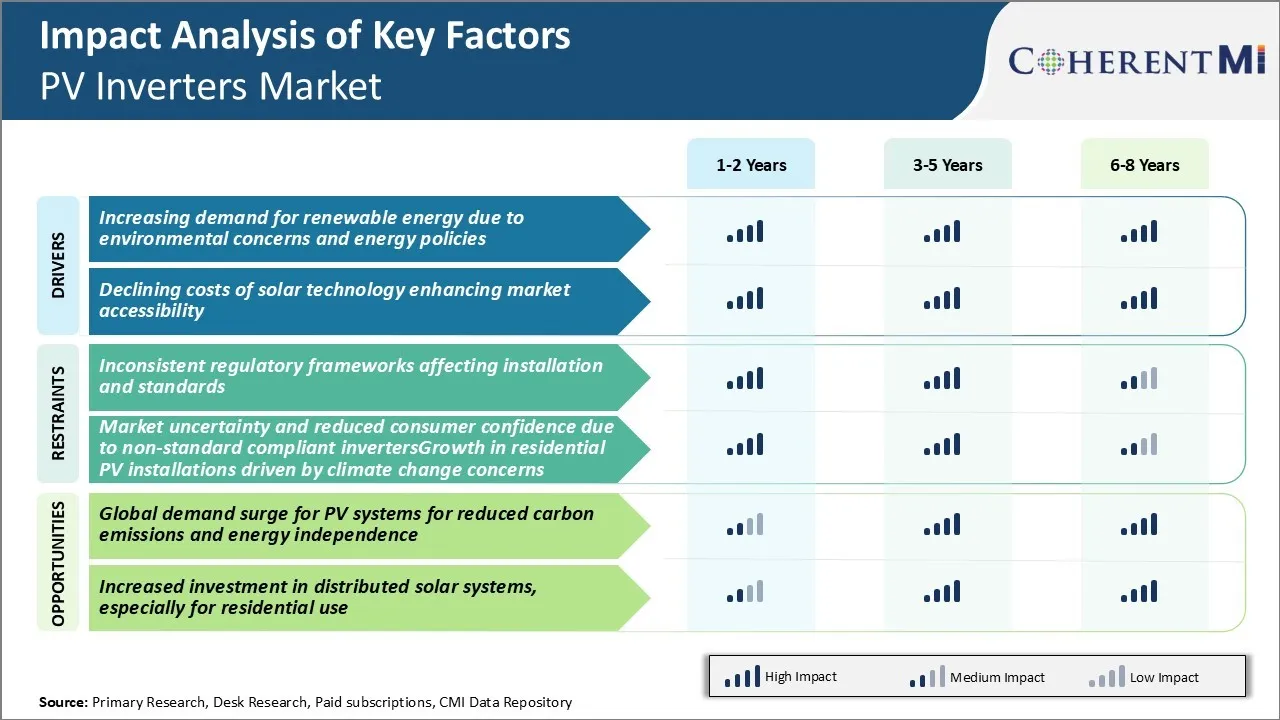PV Inverters Market Trends
Market Driver - Environmental Concerns Drive Shift to Renewable Energy Sources
The threat posed by climate change has become increasingly evident in recent decades. Devastating natural disasters like wildfires, hurricanes and droughts have intensified due to rising global temperatures. In response to growing environmental concerns, many countries have implemented policies to reduce greenhouse gas emissions and support renewable energy adoption.
The European Union has pledged carbon neutrality by 2050 which will require a major escalation in renewable capacity over the next decades. In the United States, the Inflation Reduction Act provides tax credits to homeowners and businesses installing solar that is expected to vastly increase the pace of deployments.
Technological advances have made renewable power sources like solar increasingly viable and cost-competitive alternatives to fossil fuels. Photovoltaic (PV) inverters play an essential role in enabling homes and facilities to benefit from solar power generation. Growing need for robust, high-quality inverters to maximize that renewable generation will drive growth for the PV inverters market in the coming years.
Market Driver - Decreasing Solar Prices Drive Wider Accessibility and Adoption
A major factor driving the growth of the PV inverters market has been the dramatic decline in the cost of photovoltaic panel installation. Technological improvements, manufacturing scale-ups, competitive pressures, and policy support have all contributed to price reductions of around 80-90% from 2008 levels.
These steep cost decreases have made rooftop solar financially accessible to vastly more homeowners and companies. Plunging prices position solar power as a compelling option compared to traditional fossil fuel sources, increasing its appeal beyond early fans and enthusiasts. Even those without existing incentive structures can find that solar provides long-term electricity cost savings.
With payback periods often under a decade, all sectors of the economy can now consider solar as renewable baseload generation becomes viable on an unprecedented scale. PV inverters are a critical component enabling solar energy's wider adoption as accessibility grows through declining costs. Strong inverters maximize generation and speed returns on solar investments, fueling continued expansion of PV inverters market globally.

Market Challenge - Inconsistent Regulatory Frameworks Affecting Installation and Standards
One of the key challenges facing the PV inverters market is the presence of inconsistent regulatory frameworks affecting installation and standards across different geographic regions. With many countries and municipalities having their own set of standards and regulations for solar panel installations, it becomes difficult for inverter manufacturers to develop standardized products that can meet all compliance requirements.
The permitting procedures and technical specifications vary widely, requiring customized solutions. This regulatory complexity increases costs for both manufacturers who must navigate a maze of certification protocols, as well as for EPC firms and installers who may face delays in getting new projects approved. Lack of harmonization at a global level has slowed the rate of technology transfer and new product introductions across borders.
However, many nations and trade bodies are now working to develop more uniform PV policy guidance and interconnection procedures to help streamline regulatory compliance going forward.
Market Opportunity - Global Demand Surge for PV Systems
The PV inverters market is poised to witness tremendous growth opportunities driven by the global surge in demand for solar photovoltaic systems aimed at reducing carbon emissions and improving energy independence. Climate change mitigation efforts are growing. As solar capacity additions expand around the world, the demand for necessary balance of systems components like PV inverters will scale up proportionately.
New product innovations catering to the fast-evolving solar sector as well as integrated solutions for storage and grid services will further help drive revenues for inverter manufacturers. With solar energy costs falling below fossil fuel based power generation rates on commercial scales, PV systems are increasingly seen as economically viable and self-sustaining energy options globally. This will ensure uninterrupted growth opportunities for the PV inverters market over the coming years.